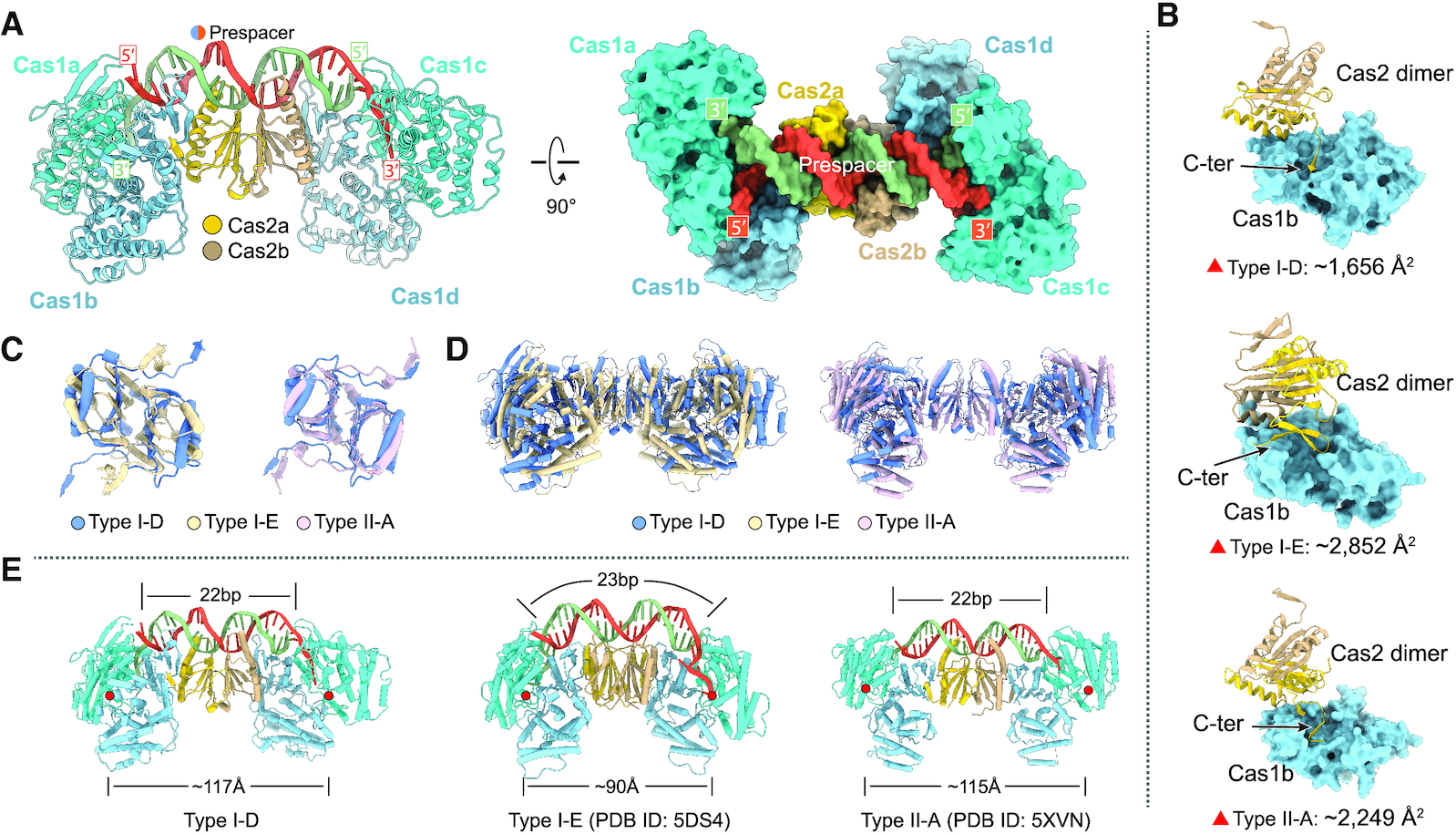On Feb. 22, the team of Professor Chen Qiang and Professor Yu Yamei from WCH’s State Key Laboratory of Biotherapy (SKLB), in cooperation with Assistant Professor Fu Tianmin’s team from Ohio State University, published the research results titled “Mechanisms of Space Acquisition by Sequential Assembly of the Adaptation Module in Synechocystis” online in the internationally-renowned journal Nucleic Acids Research (IF: 11.501). The researchers proved the interactions among Cas1, Cas2 and Cas4 proteins through biochemical experiments, determined the crystal structure of Cas1-Cas2-Spacer ternary complex and the electron microscope negative staining structure of Cas1-Cas4 binary complex (Fig.1), and elucidated a new mechanism of Cas4 participating in exogenous DNA capture and integration.

Fig. 1 Structures of Cas1-Cas2-Spacer ternary complex and Cas1-Cas4 binary complex
The team found that in the I-D system, Cas1, Cas2 and Cas4 did not appear as a ternary complex of Cas1-Cas2-Cas4. Cas4 and Cas2 competitively bound to Cas1, and the affinity between Cas4 and Cas1 was much stronger than that between Cas2 and Cas1. The two complexes of Cas1-Cas4 and Cas1-Cas2-DNA were sequentially assembled to involve in the integration of spacer sequences. Therefore, unlike the reported I-C system, the spacer integration of I-D system was divided into two steps: 1) process the prespacer DNA; 2) integrate the prespacer (Fig. 2). In this process, the Cas1-Cas4 complex recognized and processed the prespacer through the PAM-dependent endonuclease activity of Cas4, and the mature spacer and Cas1 and Cas2 formed a more stable Cas1-Cas2-Spacer complex than the Cas1-Cas4 complex. The spacer was inserted into the CRISPR loci to complete the spacer integration.

Fig. 2 Molecular mechanism of type I-D CRISPR-CAS adaptation system
CRISPR-Cas gene-editing technology has been widely used in laboratories worldwide. A deeper understanding of CRISPR-Cas system not only broadens the horizon of the human knowledge, but also facilitates developing a new generation of gene-editing tools.
Original link: https://doi.org/10.1093/nar/gkab105